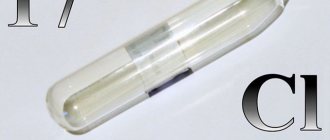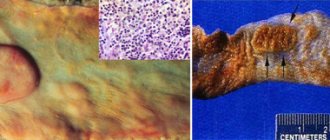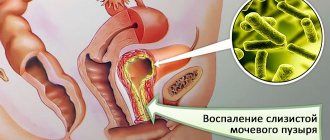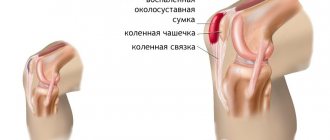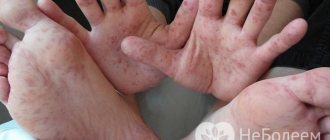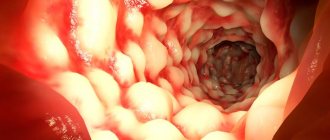What is gas poisoning
One of the aggregate states of matter, characterized by high mobility of particles, is gas. According to their chemical properties, gaseous mixtures can be either low-active or potentially explosive. Methane is mainly used for domestic purposes due to its ability to burn. The natural simplest hydrocarbon is relatively harmless to the human body, but the combustion of methane produces carbon monoxide, which is highly toxic and causes carbon monoxide poisoning.
Methane, like carbon monoxide, is colorless and odorless, so when this substance is used for domestic purposes, special odorants are added to warn consumers about a leak. Methane inhaled with oxygen is safe, but in conditions of limited air circulation, household gas can quickly fill the space, displacing oxygen. When methane concentration reaches 20-30%, it can cause symptoms of poisoning and hypoxia. Prolonged inhalation of oxygen-poor but methane-rich air leads to damage to the nervous system.
The effect of carbon monoxide on the body is much more dangerous - signs of intoxication appear at low concentrations (less than 0.1%), and the consequences of poisoning pose a threat to human life. Carbon monoxide is formed not only from methane, this substance is released during any type of combustion, and it has no odor or color. The specific pungent odor associated with carbon monoxide is caused by organic impurities introduced into gas mixtures.
Reasons and places of poisoning
Intoxication with household gas occurs through inhalation.
Variants of gas leakage, common everywhere:
- When joints on pipes are not tightly connected.
- If the integrity of the hose or gas pipe is damaged.
- When gas leaks from the stove due to a loosely closed valve handle responsible for controlling the flame.
- In case of equipment malfunctions.
There are frequent cases of deliberate release of gas when a murder or suicide is planned.
We take into account the fact that it is easy to get poisoned not only in the apartment, but also at work. Methane, butane or propane are used to heat rooms.
Welders are at risk. Intoxication with toxic substances can occur in the hold of a ship, in a mine, in a well, in a silo. It is possible to be poisoned by liquefied gas from a cylinder for heating private houses.
Gas leaks at night can become dangerous. In a dream, a person does not notice the smell of leaking gas, hypoxia affects the physiology of a relaxed body, and death occurs.
The effect of gas on the human body
Methane has the ability to penetrate the physiological barrier separating the circulatory and central nervous systems, which gives it the ability to affect the brain. The effect of this gas is similar to the weak narcotic effect of diethyl ether. When systematically inhaling methane in isolated rooms, depression of the respiratory system and impulses of the vagus and trigeminal nerves occurs. A constant high concentration of gaseous hydrocarbons in the air leads to shifts in the functioning of the autonomic nervous system.
When carbon monoxide enters the body, it combines with hemoglobin (carboxyhemoglobin is formed in the blood), which is highly durable. As a result of the formation of this connection, oxygen transport mechanisms are blocked and cellular respiration is disrupted. When carbon dioxide is included in oxidative reactions, the balance of tissue biochemical processes is disturbed, which leads to a decrease in psychomotor reactions. Carbon monoxide has a damaging effect on the following body systems:
- cardiovascular;
- central nervous system;
- respiratory;
- mucous membranes and skin.
“Half a minute of glitches and psychedelic tininess”
Children's substance abuse swept Russia in the 1990s. The epidemic was overcome, but a couple of years ago, sniffing—inhaling lighter gas—began to gain popularity among Russian teenagers. Most people become familiar with volatile hydrocarbons at school. Some people try to “puff” for the first time at the age of 10-11. Lenta.ru found out the reasons for the popularity of sniffing and the possible consequences of misuse of national property.
Artem is in his senior year at one of the Samara schools. At the age of 16, he received his first rank in athletics, and soon hopes to become a candidate for master of sports, and in the future to become a professional athlete. He comes from a prosperous family and does not want to advertise his real name, because his father is “to some extent a public figure.” Artem is a sniffer: in his free time, he and his friends breathe gas to refill lighters.
They breathe gas directly from a cylinder or by first spraying it into a bag, or, in rare cases, into a plastic bottle. One large can is enough for several people, and it runs out in an hour and a half. The composition of the gas for refilling lighters usually includes propane, butane and isobutane. One cylinder costs from 50 to 150 rubles.
Artem took a puff for the first time at the age of 14. Then it was a banal interest and an ordinary lighter. “You take a lighter, unscrew everything on top, and carefully pour it into your mouth. You drink the whole thing and it’s covered,” he says.
It hit Artem hard, and after the first time he didn’t think about gas for two years, until a couple of months ago someone in his company said that a spray can was a “normal topic”, better than a lighter. So he rediscovered volatile substances.
Teenagers perceive such experiments with their bodies more as a prank, an opportunity to kill time and gain new sensations. On the one hand, gas is affordable - you can buy it in almost any store. On the other hand, it does not have such a negative image as drugs do. The chief narcologist of the Ministry of Health, Evgeniy Bryun, is confident that sniffing is one of the manifestations of people’s inherent desire to change their mental state.
Image: Beavis and Butt-Head
“When you’re 16, drugs are scary and expensive. I’m very afraid of killing myself with some crap like that,” the guy explains. For him, gas is a new experience and entertainment, almost like cigarettes or alcohol, but not as popular.
“I wouldn’t say that I’m directly stuck on it, we don’t do this very often,” continues Artem. He hung out with his peers at least once a week, but usually more often. Sometimes in someone’s home, sometimes right on the street - passers-by didn’t react much to this, breathing gas is not illegal, so there is no need to hide.
Almost every time was spontaneous for the teenager. We went out for a walk, went into a store, bought a can of spray, and caught the disapproving glance of the saleswoman. Then someone's empty apartment and a group of high school students alone with gas.
Another Lenta.ru interlocutor, 22-year-old Dmitry, spent his childhood and school years in a small town in the Komi Republic. In high school, a friend suggested that he “puff,” saying that it would feel like taking psilocybin mushrooms.
Compared to cigarettes and alcohol, gas is not particularly popular among his peers, but there were still a few people who shared similar interests. They bought a cylinder every two or three days, and one of his friends “breathed all day long.”
Together with his girlfriend, he “puffed” through the entrances and apartments for a year. After delving into his memories, Dmitry adds: “We caught some cool auditory and cognitive glitches. Like a trance, it’s like you’re not here.”
Each sniffer's experience is different. Everyone is “held” differently - from 30 seconds to 10 minutes and even more. Some may feel almost nothing, while others may be transported to another dimension. The gas often makes you feel dizzy, weak, tingling in the arms and legs, nausea, disorientation, confusion, and sometimes even hallucinations. All these are signs of hypoxia and poisoning. And this is precisely why many people get a thrill.
22-year-old Ekaterina learned about sniffing in her native Novy Urengoy when she was 15 years old. According to her, she tried gas from a cylinder only once, and she was not impressed with the sensations.
“Tingling throughout the body does not cause discomfort. An unusual feeling. Slightly expands the chest. Warmth spreads throughout the body. The mind begins to become slightly cloudy, but not as much as from alcohol or something else. If you start to speak, your voice becomes distorted. For some reason this made me laugh, and the perception of laughter in my head was a little strange. It seemed as if it was coming from somewhere behind and in the distance,” she describes her experience.
“Some started vomiting. This was the first signal that it was too much and it was time to stop. I saw the guys vomiting. The rest usually didn’t do the approaches very many times,” explains Ekaterina.
Artem talks about his feelings not so colorfully. After inhalation, he was “strangely overcome” for about 30 seconds, there is usually no “coming” as such or anything wildly pleasant, his eyes darken, his skin tingles, “you just feel like some kind of body.”
Dmitry says that under the gas a person is easily suggestible: two or three sniffers sitting next to each other can easily catch the same glitch. “I also remember auditory hallucinations, usually towards the end. Something like ambient and the band Crystal Castles (a musical group performing experimental electronic music— approx. “Lenta.ru”
). And in the end, the squeak is like something from a TV,” he tries to describe his experience.
18-year-old Muscovite Gennady began experimenting with volatile substances at the age of 11. In those years, he collected lighters, one day he noticed the inscription “do not inhale” on a gas cylinder for refilling and decided to take a risk. “I caught a hard short trip and continued until I emptied half the tank. Then he left for a long time and unpleasantly,” he recalls.
From idleness, he “puffed” alone for a couple of years. I tried propane with butane, gasoline, white spirit and other similar solvents. All of them, he says, have a similar effect.
Gennady says that gas trips lasted no more than a minute, but were always very strong. “Psychedelic tin with elements of physical sensations in different parts of the body. A complete change in the perception of everything around. You are in an uncontrollable flow of thoughts and actions,” he tries to explain.
Each time was difficult for his body - “the topic was too tough for a permanent basis.” He recovered from this on average for about an hour, adequacy and rational thinking gradually returned, but his body was breaking, “I wanted to bend my knees and swallow my tongue.” Walking in the fresh air helped ease the condition.
After some time, Dmitry noticed negative consequences: it became more difficult for him to study, his consciousness was constantly clouded, he had “stupid” moments, and his academic performance deteriorated. This “dissipated” three to four months after the complete abandonment of sniffing.
Evgeny Brun notes that people usually enjoy hypoxia. This, by the way, can explain my love for rock climbing. “At high altitudes, blood vessels dilate, including those of the brain, and its nutrition improves. It's good for your health. But if hypoxia is caused in an unnatural way, it leads to the death of brain neurons - the person becomes stupid. If a person is heavily dependent, this is irreparable harm,” he argues.
Artem says that his friends learned about sniffing from a video on YouTube. With a correctly formed query in a search engine, there are plenty of them. In some, the main characters are adults, but often there are videos with teenagers, including from Russia. Jokes, personal stories, guides on the rules of inhaling gas and choosing cylinders, life hacks - if desired, you can find any information on this and other Internet resources.
The jokes ended in October 2021, when a video of the death of a schoolchild after inhaling gas in the city of Volosovo, Leningrad Region, appeared online. The footage shows a teenager lying on the floor in the entrance of a residential building and breathing heavily, while his friends stand nearby, laughing and filming what is happening on camera. Soon the young man begins to twitch a little, then goes limp and does not move anymore. The phrase is heard off-screen: “His eyes rolled back. He peed himself, call an ambulance.”
The regional department of the Investigative Committee opened a case under Part 1 of Article 109 of the Criminal Code (“Causing death by negligence”). According to the investigation, on October 20, a 17-year-old teenager and a friend were breathing gas from a canister, and there were other schoolchildren nearby. At some point, the young man became ill, lost consciousness and died.
Half of Lenta.ru’s interlocutors have a story about a schoolboy from his city who died from gas. Dmitry says that a couple of years ago, a sixth-grader who was breathing in an air freshener died in the entrance of his house.
Catherine has two such stories: first, a boy from a nearby school died, and then her close friend - he was allergic, after inhaling the gas, his throat swollen and he choked on vomit. Very soon, the sale of gas cylinders was restricted in stores in Novy Urengoy, but aerosols remained available.
Every month, law enforcement agencies and the media record dozens of deaths due to aerosols and hospitalizations of minors who were poisoned by natural gas. In a VKontakte group called Goldendose, deaths from butane and propane are mentioned slightly less often than from spice and opiates like heroin.
Despite this, the Russian expert community knows little about sniffing. Narcologist Evgeniy Brun, in a conversation with Lenta.ru, admits that he is hearing about such a phenomenon for the first time, although he notes that there is nothing unique about this.
“Inhalation of toxic substances leads to brain hypoxia. Hypoxia of the brain causes euphoria. That’s where it all ends,” he explains.
The editor-in-chief of the magazine “Narcology”, the former chief children's narcologist of Russia, Alexey Nadezhdin, claims that in our time substance abuse is not as widespread as in the 1990s. He is sure that now these are rather isolated cases, at least in the Moscow region.
According to forensic expert Alexei Reshetun, mostly middle and high school students, more often boys, less often girls, die from the gas. “A toxic substance acts on the blood, displacing oxygen from it. At a large dose, it is fatal - regardless of the number of previous uses. Death can occur just once. In the digital version, there is no lethal dose,” he explains.
Until teenagers started dying in Novy Urengoy, Ekaterina’s acquaintances took natural gas lightly—every third teenager had a can. It was considered safer and weaker than alcohol. After a series of deaths, the passion for gas in her circle stopped as abruptly as it began. Everyone reacted extremely disapprovingly to any proposals to “puff up.” A few years ago she moved to Moscow, but assures that now there is no “fuss” in Novy Urengoy.
Image: “Edges from the Ramp” page on VKontakte
Our first conversation with Artem took place at the end of October. Then he said that the video of the death of a schoolchild in the entrance impressed and frightened him. At that moment he decided to give up sniffing. He hasn’t been breathing gas for two months now, and many of his comrades haven’t either, but there are others who haven’t been stopped by this.
“It’s not like hysteria started after the video and everyone quit. It’s just that, apparently, everyone decided something for themselves. Some are tired, some are afraid, some stopped because their friends stopped. Someone didn't stop. We are not looking for deep meanings in this,” he explains.
Substance abuse, including sniffing, is a purely teenage phenomenon. Alexey Nadezhdin says that, having matured, a person gives up this form of addiction, but often it is replaced by alcoholism. “It should be noted that malignant alcoholism is developing with an extremely severe course, which leads to very rapid death,” adds the narcologist.
Experts interviewed by Lenta.ru say that even a single use of gas is harmful, since volatile substances disrupt the functioning of the central nervous system and have a negative effect on blood microcirculation and brain cells. With increasing experience, this damage to the body accumulates; cells suffering from constant hypoxia die.
If a person breathed gas rarely and for a short time, health can be restored, especially if the body is young. According to Alexei Nadezhdin, a child’s brain has better restorative and reactionary abilities than an adult, but they also have their limits.
“Clerambault’s law is known in psychiatry: the more severe the outcome of a mental disorder, the earlier in age it began and the more massive the organic damage to the brain with which it is associated. It is clear that if a child begins abuse from the age of 5-7, and has stopped by the age of 17-18, full functioning of the psyche cannot be expected in the future,” he warns.
Photo: Evgeny Pavlenko / Kommersant
With prolonged and persistent use of toxic substances, memory and thinking suffer, frequent headaches occur, and mental disorders appear. These symptoms appear quite clearly, and such processes are usually irreversible.
“If a person completely refuses to use it, leads a healthy lifestyle, takes certain medications, the consequences are neutralized, but the organic substance is not completely cured,” Reshetun sums up.
Official statistics cited by Alexey Nadezhdin indicate that the number of substance abusers in Russia is decreasing every year. In 2015, 5,764 people were registered, in 2016 - 4,168. All of these are minors aged 15 to 17 years.
The real numbers are obviously higher, because many sniffers simply do not come to the attention of doctors. It is useless to combat this phenomenon with prohibitive measures, because then you need to remove all products containing volatile substances from store shelves.
“There is no way to control this at all. Everyone has access to purchase, and if lectures are held in schools, this will only attract young idiots to use. In addition, most household solvents have similar effects. If you can open the balcony door or place a stool under the mezzanine, you get access to a full-fledged psychedelic drug,” says 18-year-old Gennady.
The names of the characters have been changed at their request
How can you get poisoned?
Violation of body functions due to the ingestion of exogenous toxins occurs when inhaling gas-containing air. Symptoms of acute intoxication develop gradually and imperceptibly, especially during physiological states characterized by a lack of response to stimuli (sleep, drug or alcohol intoxication). The risk group includes the following cases:
| Domestic gas poisoning | Carbon dioxide intoxication |
| Malfunction of gas equipment (cylinders, pipes, valves, gas stove) | Combustion, fire |
| Failure to comply with safety precautions when using gas equipment (incomplete closing of the valve regulating the supply) | Staying in rooms with poor ventilation while the car engine is running (unventilated garages) |
| Taking intentional actions to cause a methane leak | Staying for a long time in places where there are a large number of cars with running engines (motorways, busy roads, tunnels) |
| Systematic inhalation of gaseous paraffin hydrocarbons (industrial premises, mines) | Untimely or incomplete closing of stove dampers (in rooms with stove heating) |
| Smoking a hookah with insufficient oxygen supply to the smoking device | |
| Production workshops where carbon dioxide is used for the synthesis of organic substances |
Precautionary measures
Naturally, when the first signs of household gas poisoning appear (headache, nausea and vomiting, increased drowsiness “out of the blue”), you must immediately leave the room and call a doctor. But others also need to adhere to certain precautions when providing first aid to victims of household gas poisoning. Experts recommend:
- Under no circumstances should you turn on the lights in the room, light matches or a lighter, or use electrical appliances - a fire and then an explosion may occur at any minute.
- If you are supposed to provide first aid indoors, then there should be an assistant nearby (preferably 2-3, who should be on the street or in the entrance) - remember that the person providing assistance can be poisoned by household gas fumes, and then he will also need help.
- If it is necessary to perform artificial respiration using the mouth-to-mouth method, you need to use a damp/wet handkerchief (it is placed on the victim’s mouth), you need to inhale air through your nose and be sure to turn away from the victim. This way you can avoid self-poisoning.
- If a victim of domestic gas poisoning is unconscious, but his breathing and pulse rates are not affected, then you can revive him with a cotton swab soaked in ammonia.
- If the poisoning occurs in a mild form and a visit to the doctor is postponed for 1-2 days (it must take place!), then the victim must be provided with a large amount of kefir - this fermented milk drink will speed up the recovery of the body.
Domestic gas poisoning is a dangerous condition that requires medical attention. Even a small intake of this toxic substance into the body can lead to the development of quite complex diseases.
Tsygankova Yana Aleksandrovna, medical observer, therapist of the highest qualification category
35, total, today
( 198 votes, average: 4.67 out of 5)
Fish poisoning: symptoms and treatment
What to take if you have food poisoning?
Related Posts
First signs
The effect of gas on the body is difficult to notice immediately. Obvious symptoms of poisoning appear with prolonged inhalation of methane or high concentrations of carbon monoxide. The first signs indicating intoxication due to gas inhalation are:
- breathing disorder;
- headache (characteristic knocking in the temporal region);
- deterioration of hearing and vision;
- clouding of consciousness;
- a feeling of mild euphoria, inexplicable emotional uplift;
- decreased concentration;
- violation of fine motor skills, orientation;
- sore throat feeling.
The sooner measures are taken to stop the gas from entering the body, the greater the likelihood of minimizing the negative consequences of poisoning. When wood fuel is burned in rooms with stove heating, carbon monoxide is formed, which, with proper operation of heating devices, is removed through the chimney. If there is no draft in the furnace for any reason, there is a danger of poisoning. Signs of stove burns, in which you should leave the heated room as quickly as possible, are:
- lacrimation;
- dizziness;
- dry cough;
- slight soreness in the forehead;
- attacks of nausea;
- sudden weakness;
- the appearance of the same type of symptoms in everyone present in the room.
It is important to know
The process of methane poisoning is quite complex, as are the consequences. In the process of rescuing a person who has been poisoned by this gas, you must remember that lighting a fire in the same room is strictly prohibited. If you are not careful, this can lead to very negative consequences.
Under no circumstances should the victim be given drugs such as morphine or adrenaline.
You need to be careful when performing artificial respiration; you need to place a damp gauze cloth on the victim’s mouth. This is necessary in order not to get hurt yourself.
Only if all the rules are followed can all undesirable consequences be eliminated.
Symptoms
If, after the initial signs of poisoning appear, appropriate measures are not taken and oxygen access is still limited, the harmful effects of the gas on the body will continue, which will manifest itself in characteristic symptoms. The severity of symptoms depends on the amount of methane or hydrocarbon monoxide that enters the body. Symptoms of carbon monoxide poisoning appear faster and more clearly than signs of methane poisoning, but the overall clinical picture is similar and looks like this:
- panic attacks appear;
- breathing becomes arrhythmic, frequent, noisy, whistling;
- It is more difficult to exhale than to inhale, shortness of breath appears;
- the secretory activity of the bronchial mucosa increases;
- coordination of movements and the ability to navigate in time and space are impaired;
- a change in skin color occurs, it becomes red (hyperemia);
- there is a strong burning sensation, pain in the eyes, ringing in the ears;
- the pulse becomes threadlike;
- severe muscle weakness, drowsiness;
- attacks of nausea and vomiting begin;
- paralysis may occur (consciousness will be clear);
- there is confusion, delusions, hallucinations;
- signs of hypotension appear;
- the emotional background is destabilized;
- reflex activity decreases.
Key Caveats
- Even if there is the slightest suspicion of a domestic gas leak into the room, you should never turn on electric lighting devices, light matches, or even smoke, as these actions can not only lead to a fire, but also provoke an explosion.
- When providing emergency assistance to a victim, it is advisable to enlist the support of other people, since the person performing first aid measures may unwittingly become a victim of the toxic effects of carbon monoxide.
- Compliance with basic fire safety rules will significantly reduce the risk of emergencies associated with carbon monoxide and household monoxide.
Forms of poisoning
Based on the severity of symptoms and severity of consequences for the body, gas poisoning is divided into four forms. The degree of damage to internal organs and systems depends on the concentration of gas contained in the air and the time of exposure of the body to harmful substances. Each form of intoxication is characterized by specific symptoms, which are important to know in order to take adequate measures to save the victim:
| Form | Lightweight | Average | Heavy | Instant |
| Degree of gas concentration from the total volume of air, % | from 0.009 to 0.052 | from 0.052 to 0.094 | From 0.1 to 0.99 | From 0.99 to 1.2 |
| Time of exposure at which the form of poisoning is recorded, h | 1-5 | 2 | 0,5-2 | 1-5 min. |
| Characteristic symptoms | Slight decrease in psychomotor functions, mild headaches, shortness of breath, lethargy | Severe throbbing headache, profuse lacrimation, runny nose, deterioration of sensory sensitivity | Tachypnea, loss of consciousness, involuntary muscle contractions, lack of response to stimuli, depressed consciousness and reflexes | Lightning loss of consciousness, constant vomiting, complete lack of response, pulse is difficult to palpate |
| Chances of recovery from poisoning | High (with timely access to fresh air) | High (with timely provision of medical care) | Average (will need to undergo a course of treatment) | Low (possible irreversible consequences for the body, high risk of death) |
Along with the main forms, which are often recorded, there are atypical types of poisoning, which include euphoric and fainting. The exact mechanism of occurrence of these forms is unknown, but presumably such conditions arise due to damage to the center for regulating vascular tone and higher nervous activity. Manifestations of atypical signs of poisoning are typical for persons with cerebral circulatory disorders or a predisposition to nervous disorders.
- Abdominal and waist trainers
- Beer cookies - simple recipes with photos. How to quickly prepare the dough.
- Green tea with ginger for weight loss: recipes
Health recovery
As a result of gas poisoning, a profound disruption of the body’s vital functions occurs. A patient with this diagnosis is placed in a hospital for examination and accurate determination of the injuries received - only in this case will the treatment be effective.
Saline solutions
The therapeutic course begins with oxygen therapy, which relieves shortness of breath, saturates the lungs and blood vessels with oxygen, helps restore the functioning of the immune system, and eliminates heart failure. In severe cases of intoxication, an exchange blood transfusion is performed. Calcium chloride is administered intravenously (to stimulate the sympathetic nervous system) and saline solutions that neutralize the effect of the poison in the body.
Treatment of household gas poisoning includes the prescription of a number of cardiac medications, analgesics, non-steroidal and anti-inflammatory drugs. If the patient is overly excited or prone to seizures, drugs that can have an antipsychotic effect are added to the complex course.
In the final stage of treatment, the patient is recommended stimulants of biological origin, physiotherapy, hydrotherapy, therapeutic massage, and specially selected physical exercises.
Homeopaths advise not to forget about phytotherapeutic methods of treatment:
- cranberry infusion - removes toxins, replenishes the lack of vitamin C;
- knotweed infusion - reduces the permeability of blood vessels;
- Rhodiola rosea extract - improves immunity;
- rowan fruits - a natural vitamin and mineral complex;
- chamomile - has an anti-inflammatory effect;
- lemon balm herb - relieves increased emotional excitability.
Herbal raw materials are a good addition to pharmaceutical products. Before using any folk or pharmaceutical remedy, you should consult your doctor.
Treatment
The severity of the consequences of poisoning depends on how quickly assistance is provided to the victim in case of gas poisoning. Almost all cases of intoxication with gas-containing substances require hospitalization and subsequent treatment in a hospital. There is no antidote that can remove all toxic substances after gas intoxication, so rehabilitation of victims is carried out in several stages:
- Complete examination of all organs and systems.
- Prescribing medications based on diagnostic results.
- Restoring the functions of the respiratory system through physiotherapy and therapeutic exercises.
First aid
First aid at home if gaseous poisoning is suspected is necessary for any type of intoxication, since timely measures can save the life of the victim. The most important thing that a person who has inhaled a large volume of toxic substances needs is access to fresh air. Before the medical team arrives, the following measures should be taken as quickly as possible:
- remove the victim from the room (if impossible, ensure the supply of oxygen by opening windows and doors, cover the mouth and nose with a cloth);
- give the patient a drink of strong sweet tea or slightly alkaline water (if the person is conscious);
- if the victim’s consciousness is clouded, moisten a piece of cotton wool with ammonia and bring it to the nose;
- if the patient is unconscious, he should be given a comfortable position to expand the chest and increase lung capacity (back up);
- If the pulse or breathing stops, it is necessary to perform an indirect cardiac massage.
Drug treatment
First aid for carbon monoxide poisoning, carried out by medical personnel, consists of quickly removing the poisoning products from the victim’s body. For this purpose, the patient is given the antidote Acizol, and droppers with antihypoxants and drugs are placed to stabilize the heart. Oxygen supply is ensured using an Ambu bag or through intubation (insertion of a tube into the trachea). If the victim does not breathe or have a heartbeat, he is urgently taken to the intensive care unit and resuscitated.
After stabilizing the patient’s condition, he is examined to identify abnormalities in the functioning of organs and systems and prescribe qualified treatment. Therapeutic measures to eliminate the consequences of gas intoxication include taking the following groups of medications:
- anti-inflammatory – prevent and relieve inflammatory processes in the respiratory tract (Pulmicort, Budesonide);
- anticonvulsants – reduce increased muscle tone, relieve spasms (Levodopa, Amantadine);
- painkillers - alleviate the condition of the victim, eliminate pain (Novigan, Aspirin);
- vitamin-containing products – contribute to the destruction of carboxyhemoglobin (Carboxylase);
- sorbents – neutralize toxins, help cleanse the body (Polysorb).
First aid
Provide first aid for household gas poisoning as quickly as possible. People with methane poisoning need to leave the room. If there is no such opportunity, open all the windows and vents. Free your neck from scarves and other things. A patient who cannot walk independently is taken outside. Lay on your back, lower limbs should be raised. Rub your legs and arms to increase blood circulation. In case of unconsciousness, mouth-to-mouth artificial respiration is performed. Apply a bandage soaked in cold water or ice to your head. If the poisoned person is conscious, he is provided with plenty of fluids; plain water or other drinks, except alcohol, will do. An ambulance is called.
Consequences
Any concentration of toxic substances can have a detrimental effect on the body, especially on brain performance. According to medical statistics, more than 40% of patients affected by gas, after a course of treatment, complained of memory impairment and frequent headaches. The consequences of poisoning are especially dangerous for people suffering from diseases of the cardiovascular system and the elderly.
The negative effects of exposure to toxic gas toxins may not appear immediately, but only after several weeks or months. According to the speed of manifestation, the consequences of poisoning are divided into two groups - early and late:
| Early complications (manifest after 2-3 days) | Late complications (manifest after 5-40 days) |
| Decreased hearing and vision | Development of amnesia |
| Poor blood circulation in the brain | Decreased mental capacity |
| Edema of the lungs, brain | Partial or complete blindness |
| Destabilization of heart rate | Cardiac asthma |
| Prolonged headaches | Pneumonia |
| Exacerbation of mental illnesses | Mental disorders |
Possible complications of intoxication
Gas poisoning can cause diseases of the cardiovascular, nervous, respiratory and visual systems. The development of disorders in the form of memory lapses, speech inhibition, and deterioration of attention may be observed. It is difficult for a person to concentrate, process and analyze information, formulate and reproduce thoughts.
Gas intoxication is especially dangerous during pregnancy. In case of severe poisoning, the fetus may suffer. Blocking hemoglobin leads to oxygen starvation of the baby. Exposure of a pregnant woman to carbon monoxide can result in intrauterine fetal death.
It is important to notice the characteristic symptoms of intoxication in time. Proper first aid will prevent dangerous complications from occurring.
Of course, each apartment has a kitchen stove, or a water heater, or a boiler for heating. All gas appliances require careful and careful handling due to the risk of explosion. Thus, gas poisoning can occur due to equipment malfunction or failure to comply with basic safety rules. This situation is very dangerous for humans and poses a real threat to life. Therefore, it is important to know the signs of natural gas poisoning, as well as the possible consequences.
Prevention
Taking precautions when handling household gas will help avoid leakage, which is the main cause of poisoning. The addition of substances that give the gas an odor helps to timely determine the gas contamination of the room, which should be immediately reported to the gas services. The main ways to prevent poisoning are:
- monitoring the serviceability of gas equipment;
- timely elimination of detected problems by contacting the appropriate service;
- installation of sensors that record the concentration level of gaseous substances in the air;
- checking the completeness of blocking the flow of methane after turning off the stove;
- ensuring that devices are not accessible to children;
- draft control in fireplaces and stoves;
- use of protective equipment when working in a poorly ventilated garage or production area.
First aid
In case of gas intoxication, first aid should be provided immediately. First you need to remove the person from the dangerous room and provide access to fresh air. To do this, you need to open the window and unbutton your clothes.
Also, to provide first aid in case of household gas poisoning, you must perform the following steps:
- lay the victim down with his legs slightly higher than his body;
- rub the chest and limbs to activate blood circulation;
- give plenty of liquid - plain water, milk or tea are perfect;
- when vomiting, turn your head to the side - this will help to avoid the tongue retracting and vomit from entering the respiratory system;
- if symptoms of clinical death occur, first aid for suffocation includes chest compressions and artificial respiration.


